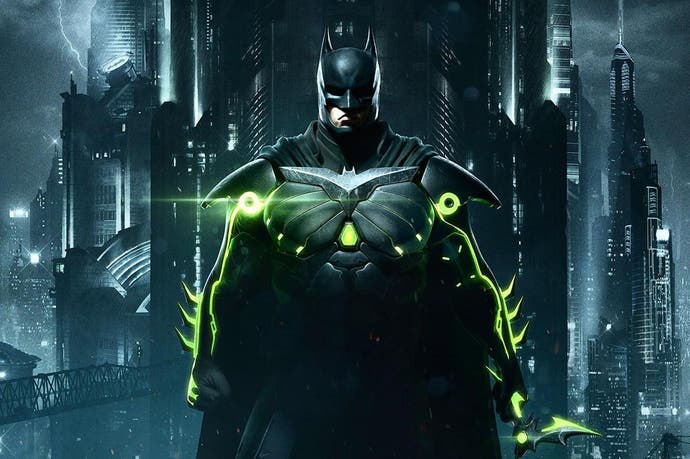Injustice 2 on PS4 Pro is the best way to play
Higher resolution and improved art and effects build on an already superb console release.
Injustice 2 is a truly impressive release: featuring some of the best facial animations seen in a fighting game and some insane over-the-top super moves bolstering an ambitious single-player mode, developer NetherRealm Studios confirms the use of Mortal Kombat X's engine - a customised Unreal Engine 3 - has a big role in improving its visuals since the last Injustice title. Disappointingly, there's no PC version of the game available at launch, but analysis of the PlayStation 4 Pro release gives us some idea of how this impressive engine scales up on more capable hardware.
Among the main improvements over the first Injustice are improved effects work, reworked character models, and a push for more destructible physics to background objects. However, despite the substantial improvements, console gameplay is still tightly tuned for 60fps gameplay, though non-controllable intro sequences and super-moves are locked at half-refresh 30fps instead. The switch between these two refreshes is certainly jarring - a point we'd hoped a prospective PC version might address - but outside of very occasional, mostly unnoticeable tearing, the performance metrics are faultless during actual combat. Occasional stutter can kick in during online play, but for the most part, the experience is rock-solid.
So which version offers up the best experience? As ever, visuals differ between PS4, PS4 Pro and Xbox One in order to sustain that crucial 60fps and PS4 Pro inevitably ends up with the greatest benefits. Chief among them is resolution: Xbox One runs at a native 1600x900, PS4 sits at 1920x1080, and finally PS4 Pro pushes out 2560x1440 while outputting to a 4K display. For those on older 1080p displays using PS4 Pro, pixel counts are a mixed bag; half of our test shots reveal super-sampling from a higher resolution in effect, while the other half shows a pixel structure closer to 1080p. In either case, image quality is clearly improved next to a regular PS4 outputting at the same resolution, and we're very happy with the final image.
Between PS4 and Xbox One, the rest of Injustice 2's visual design is on par, saving for a boost in texture filtering quality on Sony's machine. The more exciting upgrades are reserved for PS4 Pro, where the team at NetherRealm Studios states we can expect "much better shadowing, motion blur and texture resolution".
Bundled together with the lift to 1440p, these enhancements show PS4 Pro support is going strong here, though outside of direct head-to-head comparisons, the differences are subtle. Easily the biggest upgrade is in motion blur. Every jump, swipe and roll from Injustice 2's roster produces a visible blur trail, but the quality of the effect falls a little short on PS4 and Xbox One. It's an approximated form of the effect, creating a visible dither artefact on moving edges - something PS4 Pro greatly improves. Each edge is smoother and clearer on Pro hardware, blending samples from the previous frames of movement to create a more filmic result - and one that's appreciable in play.
The boost in texture quality is a neat plus on PS4 Pro too, something that works in two ways. On the one hand, texture map quality is increased in spots across certain stages, while on the other, there's an uptick in texture filtering quality, allowing for a clearer presentation of surfaces. In general, these texture differences are often hard to catch during a side-on view for regular gameplay, but at least works well in tandem with PS4 Pro's higher resolution 1440p window.
Shadows are also updated here, though not in the way we at first expected. Regular dynamic shadows from characters use the same resolution between PS4 and PS4 Pro - but it's in ambient occlusion quality that we enjoy some gains. In this case, PS4 and Xbox One apply an approximated form of shading that creates a thicker shade in the background. It's a symptom of less taxing forms of the effect, like SSAO, and by comparison PS4 Pro offers a more precise approach. A matching frame of Joker's intro sequence, for example, shows subtler pockets of shade forming across the Jungle City stage with a more natural result.
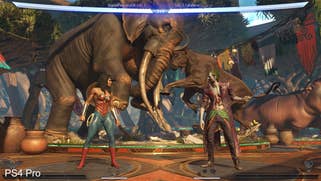


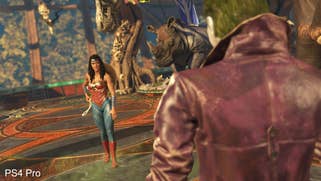
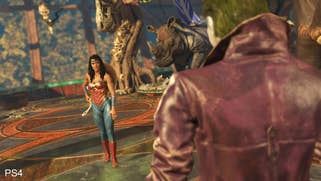




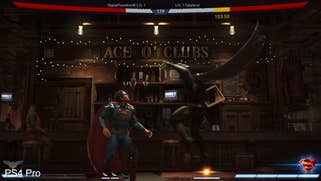
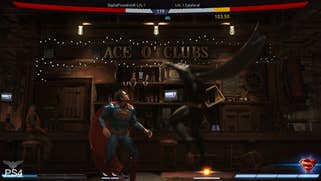
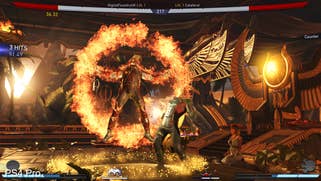
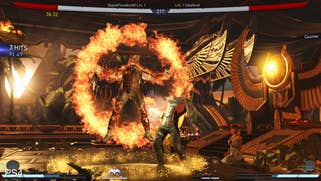

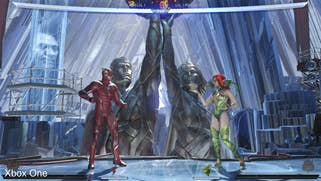
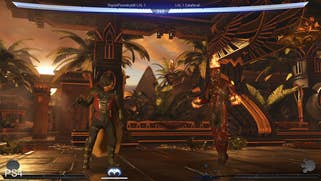
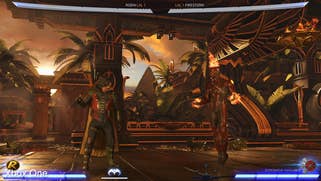
The rift in settings between the two PS4 consoles gives us a tantalising peak at what a PC version could potentially bring to the table. Clearly the parameters are set for a higher band of effects and textures in Injustice 2, but we'd love to see if anything else is held back for higher-end PC systems. Neither PS4 or Xbox One lose out too much meanwhile, and the campaign mode's strong facial animation and lighting come through well regardless of platform. Our only lasting gripe is the frequency of the 60/30fps switches during any given battle, but at least the core combat isn't affected.
A special mention must go out to Injustice 2's HDR support. Set from the first boot of the game, supporting consoles like PS4, PS4 Pro and Xbox One S all enjoy the HDR10 standard, with an option to dial up and down the peak brightness level to suit your display. In our case, the office's Panasonic DX750 put this to great use when set to 8 on the slider - before diminishing returns kicked in owing to the LCD panel's native contrast levels.
Equally, it's pleasing to see all pre-rendered cut-scenes (often used to bridge each chapter in the main campaign), are encoded to this standard too - meaning there's no sudden jump in colour space when moving to in-engine rendered scenes. HDR thrives on stark contrasts within a frame, and the DC universe's darker colour palette lends itself well to this end - dark, dingy environments marked with neon streaks, god rays and bright specular effects. It's lovely stuff.
In the here and now though, PS4 Pro evidently offers the most refined package overall. It's a solid effort from NetherRealm Studios - though again, we're seeing a 1440p target on a high-profile console release. There's no doubt that the additional resolution and effects work hand in an improved presentation compared to base hardware, but it's still a touch disappointing to see hardware designed for 4K screens only using 44 per cent of the pixel count. But in the absence of the PC version, the PS4 Pro release is the best we're going to get - for now, at least.
